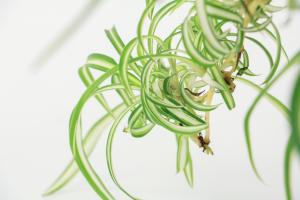How to Plant Fruit Trees in Florida
Florida's sunny climate provides an ideal environment for growing a variety of fruit trees. Whether you're a seasoned gardener or a beginner, planting fruit trees can be an enjoyable and rewarding experience. In this article, we will guide you through the process of planting fruit trees in Florida.
Choosing the Right Fruit Tree
The first step in planting fruit trees in Florida is choosing the right tree. With so many varieties to choose from, it can be overwhelming, but here are a few things to consider:
Climate: Make sure to choose a tree that is suitable for Florida's warm, humid climate. Citrus fruits, mangoes, avocados, and peaches are popular choices.
Space: Consider how much space you have for your fruit tree. Some trees can grow quite large, so choose a variety that is proportionate to the size of your yard.
Soil: Florida soil can be quite sandy, so pick a tree that can tolerate sandy soil. Alternatively, you can amend your soil with compost or organic matter to improve its structure.
Planting Your Fruit Tree
When planting your fruit tree, it's important to do it properly to ensure its health and longevity. Here are some steps to follow:
Choose a location that receives at least six hours of direct sunlight per day.
Dig a hole twice as wide as the root ball and just as deep.
Mix some compost into the soil you removed from the hole.
Place the tree in the hole and backfill with the amended soil.
Water the tree thoroughly.
Mulch around the tree to help retain moisture and suppress weeds. Keep the mulch a few inches away from the trunk.
It's important to note that in Florida, it's usually best to plant fruit trees in the winter. This allows the tree to establish its root system before the hot summer months.
Caring for Your Fruit Tree
Proper care is essential for the health and productivity of your fruit tree. Here are some tips to keep in mind:
Water the tree regularly, but be careful not to overwater. Fruit trees generally need about 1 inch of water per week, but this can vary depending on the weather and soil conditions.
Fertilize the tree according to its specific needs. Citrus trees, for example, require a different nutrient balance than peaches.
Prune the tree regularly to remove dead, diseased, or damaged branches.
Keep an eye out for pests and diseases, and treat them promptly to prevent further damage.
Harvesting Your Fruit
Once your fruit tree starts to bear fruit, it's time to enjoy the fruits of your labor. Here are some tips for harvesting:
Check your tree frequently for ripe fruit.
Pick fruit gently and handle it carefully to avoid damage.
Store fruit in a cool, dry place away from direct sunlight. Or, use it immediately to make delicious fruit salads, smoothies, or baked goods.
In Conclusion
Planting fruit trees is a fun and rewarding experience that can provide fresh, healthy fruit for years to come. By choosing the right tree, planting it properly, and providing it with proper care, you can enjoy a bountiful harvest of your favorite fruits.

 how many times do yo...
how many times do yo... how many planted tre...
how many planted tre... how many pine trees ...
how many pine trees ... how many pecan trees...
how many pecan trees... how many plants comp...
how many plants comp... how many plants can ...
how many plants can ... how many plants and ...
how many plants and ... how many pepper plan...
how many pepper plan...
































